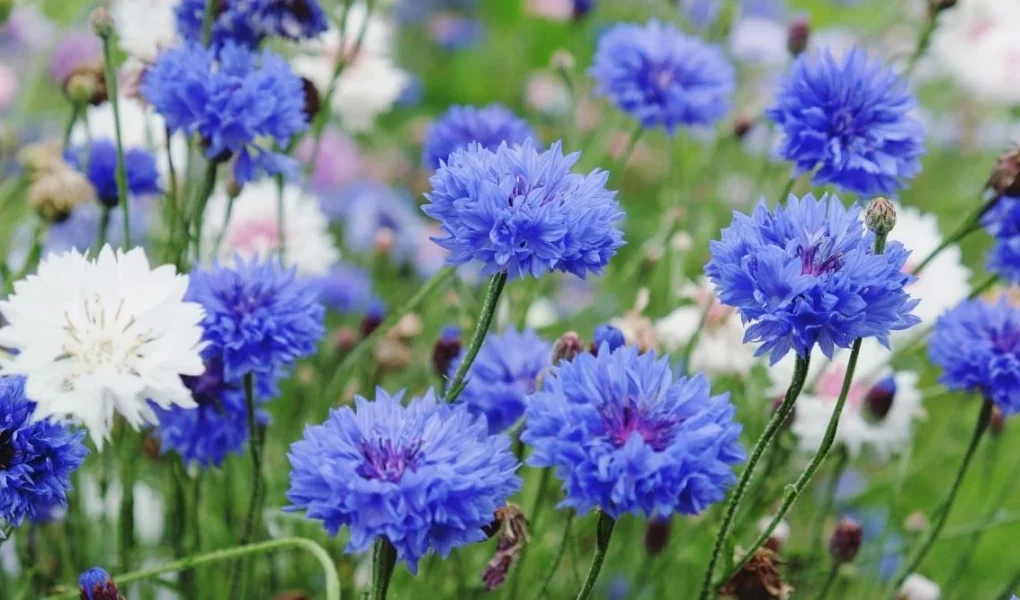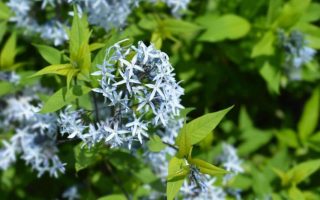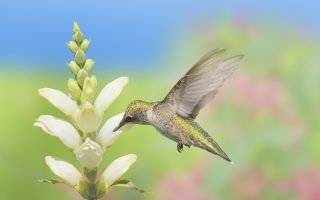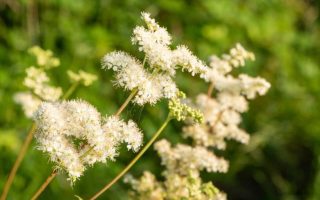lareddepathways.com – Bachelor’s Button (Centaurea cyanus), also known as Cornflower, is a delightful and easy-to-grow annual that has been cherished for centuries. Known for its striking blue, purple, or pink blooms, this cheerful wildflower adds a touch of vintage charm to any garden or landscape. Whether growing in cottage gardens, wildflower meadows, or along garden borders, Bachelor’s Button is a favorite for its vibrant colors, versatility, and ability to attract pollinators like bees and butterflies.
Key Features of Bachelor’s Button
- Vibrant, Colorful Blooms: Bachelor’s Button is most famous for its stunning, daisy-like flowers. The blossoms are typically a vivid blue, although varieties in pink, white, and purple are also available. The flowers have a ruffled, frilled appearance with a central cluster of tiny florets surrounded by long, thin petals, giving them a unique, textured look.
- Long-Lasting Blooms: The plant produces an abundance of blooms throughout the summer, typically starting in late spring and continuing into early fall. Each flower lasts for several days, but the plant keeps producing new buds, ensuring a continuous display of color in the garden. This makes Bachelor’s Button an excellent choice for gardeners looking for a long-lasting and reliable bloom.
- Compact, Upright Growth: Bachelor’s Button grows to about 1-3 feet in height, depending on the variety. It has a bushy, upright growth habit with lance-shaped leaves that are a soft green. The plant’s compact size makes it ideal for planting in borders, containers, or as an edging plant in larger gardens.
- Pollinator-Friendly: The bright, open blooms of Bachelor’s Button are irresistible to pollinators like bees, butterflies, and even birds. This makes it an excellent choice for wildlife-friendly gardens, helping to support and encourage beneficial insects in your landscape.
- Resilient and Low-Maintenance: Bachelor’s Button is a hardy plant that thrives in a variety of soil conditions. It is drought-tolerant once established and can grow in poor, dry soils. This makes it a great choice for gardeners looking for an easy-care plant that doesn’t require constant attention or special care.
Growing and Caring for Bachelor’s Button
- Sunlight: Bachelor’s Button loves full sun and thrives in bright, sunny locations. It needs at least 6 hours of direct sunlight per day to grow and flower to its full potential. While it can tolerate light shade, it will produce fewer flowers and may become leggy in shaded areas.
- Soil: Bachelor’s Button is not particularly fussy about soil type, but it prefers well-drained, moderately fertile soil. It grows well in both sandy and loamy soils, though it does not tolerate heavy, waterlogged soils. Adding organic matter to the soil can help improve its texture and drainage.
- Watering: While Bachelor’s Button is drought-tolerant, it will perform best with regular watering during dry spells, especially when it is actively blooming. Water the plant at the base, avoiding overhead watering to prevent fungal issues. Once established, the plant can handle periods of dryness and does not require excessive watering.
- Temperature: Bachelor’s Button is adaptable to a wide range of temperatures, but it prefers cooler weather. It is well-suited for growing in USDA zones 2-11 and can withstand light frost, making it an excellent choice for early spring or late summer planting.
- Deadheading and Pruning: To promote continuous flowering, it is beneficial to deadhead (remove spent flowers) regularly. This prevents the plant from putting energy into seed production and encourages the growth of new flowers. Cutting back the plant after the first flush of blooms can also help rejuvenate the plant and extend the flowering season.
- Seeding and Spacing: Bachelor’s Button can be grown from seeds, which can be directly sown into the ground after the last frost. Space the seeds about 6-12 inches apart to allow for their bushy growth. The seeds should be lightly covered with soil, and the plant will typically begin to bloom in 8-10 weeks after germination.
Popular Uses of Bachelor’s Button
- Cottage and Wildflower Gardens: Bachelor’s Button is a classic addition to cottage gardens and wildflower meadows, where it creates a nostalgic and naturalistic look. The flowers’ vibrant colors pair beautifully with other wildflowers like poppies, cosmos, and sunflowers.
- Cut Flowers: Bachelor’s Button makes an excellent cut flower, and its long-lasting blooms are often used in floral arrangements and bouquets. Whether used fresh or dried, the blooms maintain their beauty and shape for weeks, adding a pop of color to any indoor space.
- Borders and Edging: The compact size and upright growth of Bachelor’s Button make it an ideal choice for planting along garden borders, pathways, or as an edging plant. Its bright flowers create a striking visual effect and help define the edges of a garden bed or landscape.
- Pollinator Gardens: Because of its appeal to bees, butterflies, and other pollinators, Bachelor’s Button is a great addition to any pollinator-friendly garden. By planting these flowers, you can help support the health of local ecosystems and attract beneficial insects to your landscape.
- Attracting Birds: After the flowers fade, Bachelor’s Button produces small, thistle-like seeds that are attractive to birds, particularly finches. This makes it an excellent choice for bird-friendly gardens, where both the blooms and seeds can provide nourishment for wildlife.
Companion Plants for Bachelor’s Button
Bachelor’s Button pairs well with a wide range of other plants, including:
- Shasta Daisies: The simple, white blooms of Shasta daisies complement the vibrant colors of Bachelor’s Button, creating a beautiful contrast in the garden.
- Black-eyed Susans: These yellow daisy-like flowers work well with Bachelor’s Button, adding warmth and variety to the garden with their sunny hues.
- Lavender: The fragrant purple flowers of lavender provide a lovely contrast to the bright blues, purples, and pinks of Bachelor’s Button, and both plants thrive in similar growing conditions.
- Coreopsis: The cheerful yellow flowers of Coreopsis pair beautifully with the colorful blooms of Bachelor’s Button, creating a lively and vibrant garden display.
Conclusion
Bachelor’s Button is a charming and resilient flower that adds color, texture, and personality to any garden or landscape. With its vibrant, star-shaped blooms, ease of care, and ability to attract pollinators, this plant is an excellent choice for gardeners seeking a low-maintenance yet striking addition to their flower beds. Whether used in cottage gardens, cut flower arrangements, or pollinator-friendly landscapes, Bachelor’s Button brings beauty and joy to outdoor spaces, blooming brightly all summer long.




